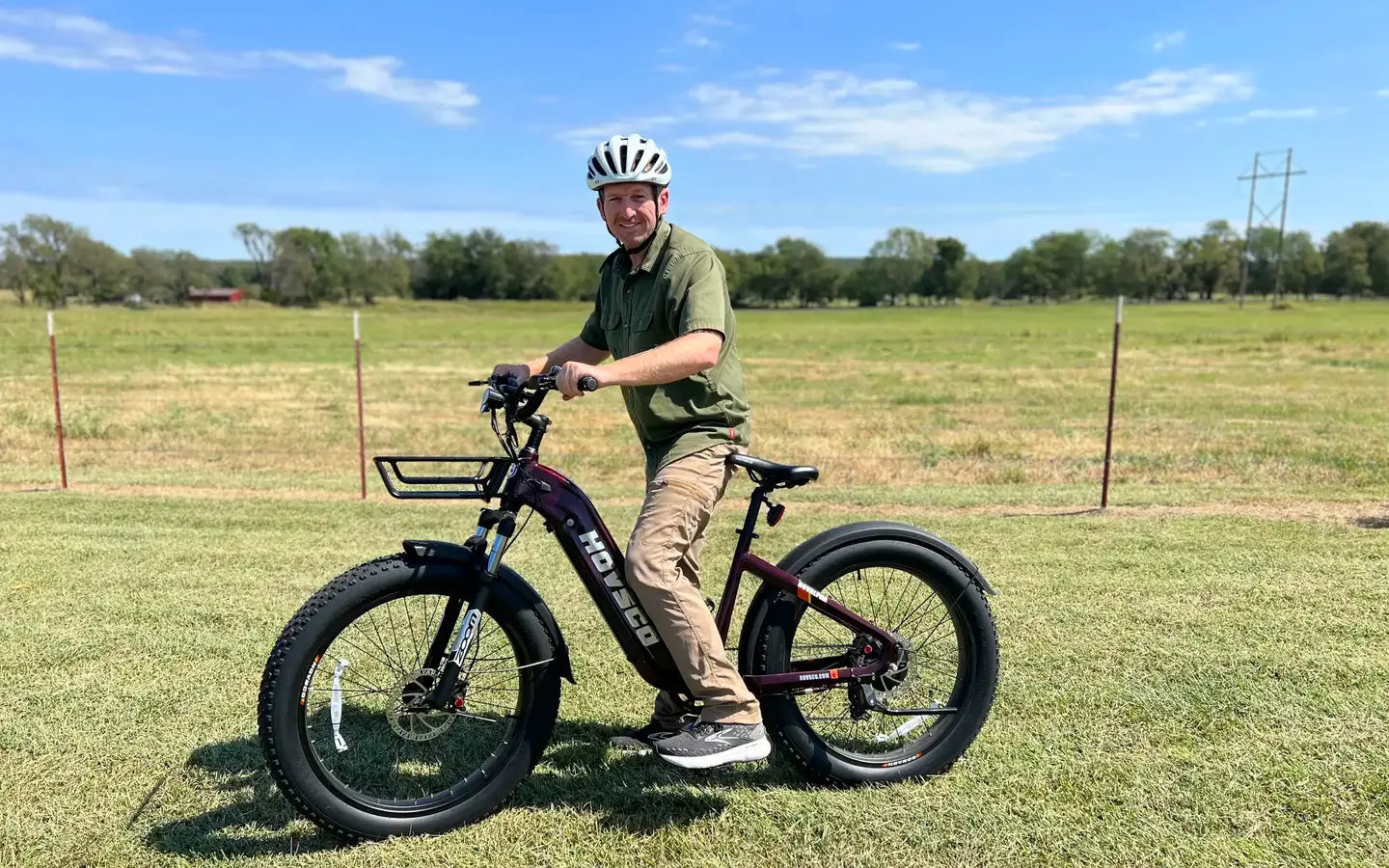
- by LiuJiazhu
What Fat Tire Electric Bike Handles Sand And Snow?
- by LiuJiazhu
Fat tire electric bikes with wide tires (4 inches or more), powerful mid-drive motors, and robust suspension systems are best suited for handling sand and snow. These bikes provide superior traction, stability, and floatation on soft, slippery surfaces, allowing riders to confidently tackle beach rides, snowy trails, and other challenging terrains with ease and control.
Fat tires distribute the rider’s weight over a larger surface area, preventing sinking into soft sand or snow. Their wide, knobby tread patterns enhance grip and traction on slippery or uneven ground. Lowering tire pressure further increases the contact patch, improving floatation and stability. This design reduces rider fatigue and increases safety on challenging surfaces.
Mid-drive motors with high torque (80 Nm or more) are preferred for sand and snow because they leverage the bike’s gears to maintain consistent power delivery and reduce strain on the motor. Geared hub motors can provide strong assistance but may overheat under heavy load. Powerful batteries (48V and above, 20Ah or higher) ensure sufficient range and power for extended rides in demanding conditions.
| Model | Tire Size | Motor Type | Torque (Nm) | Battery Capacity | Price Range |
|---|---|---|---|---|---|
| M2S All Terrain Ultra FS | 26" x 4" | Mid-drive | High (80+) | 72V 25Ah | $2,999+ |
| Aventon Aventure | 26" x 4" | Geared hub | Moderate | 48V 14Ah | $1,800 - $2,500 |
| Rad Power Bikes RadRover | 26" x 4" | Geared hub | Moderate | 48V 14Ah | $1,700 - $2,000 |
| Ride1UP Rift | 26" x 4" | Geared hub | Moderate | 960 Wh | $1,900 - $2,200 |
Full or front suspension with adjustable travel (100-120mm) absorbs shocks from uneven terrain like rocky snow or sandy trails, improving rider comfort and control. Durable frames made from aluminum or steel withstand harsh conditions and resist corrosion from moisture and salt. These features ensure the bike remains reliable and stable in wet, slippery environments.
Their wide tires and powerful motors enable riders to traverse diverse terrains safely and comfortably, regardless of weather. Fat tire e-bikes provide the versatility to ride on sandy beaches in summer and snowy trails in winter, making them excellent all-season companions for adventure seekers and commuters alike.
When purchasing a fat tire electric bike for sand and snow, prioritize models with 26" wheels and tires 4 inches or wider with aggressive tread patterns. Opt for mid-drive motors with high torque (80 Nm+) for consistent power delivery in soft terrain. Ensure the bike has durable suspension and corrosion-resistant components. Look for batteries with at least 48V and 20Ah capacity for extended range. Brands like HOVSCO offer thoughtfully designed fat tire e-bikes built for challenging conditions and year-round use.
"HOVSCO designs fat tire electric bikes to conquer the toughest terrains, including sand and snow, by integrating high-torque mid-drive motors, wide tires, and robust suspension. Our focus on durability and rider comfort ensures that adventurers can confidently explore diverse environments with minimal effort and maximum control." — HOVSCO Product Engineer
Q: Can fat tire e-bikes handle deep sand and snow?
A: Yes, their wide tires and powerful motors provide the traction and floatation needed for these terrains.
Q: Is a mid-drive motor better than a hub motor for sand and snow?
A: Generally, yes. Mid-drive motors use the bike’s gears to optimize torque and reduce motor strain.
Q: How should I maintain my fat tire e-bike after riding in snow?
A: Clean off salt and moisture, lubricate the drivetrain, and keep the battery warm to prevent damage.
Q: What tire pressure is best for sand and snow?
A: Lower pressure (around 10-15 psi) increases traction and prevents sinking.
Q: Are there specific tires recommended for sand vs. snow?
A: Paddle tires work well for deep sand, while knobby tires provide better grip on snow and ice.
Share:
How To Find Best Fat Tire E-Bike Family Bundle Deals?
What Are The Best Step Through Fat Tire Ebikes 2025?